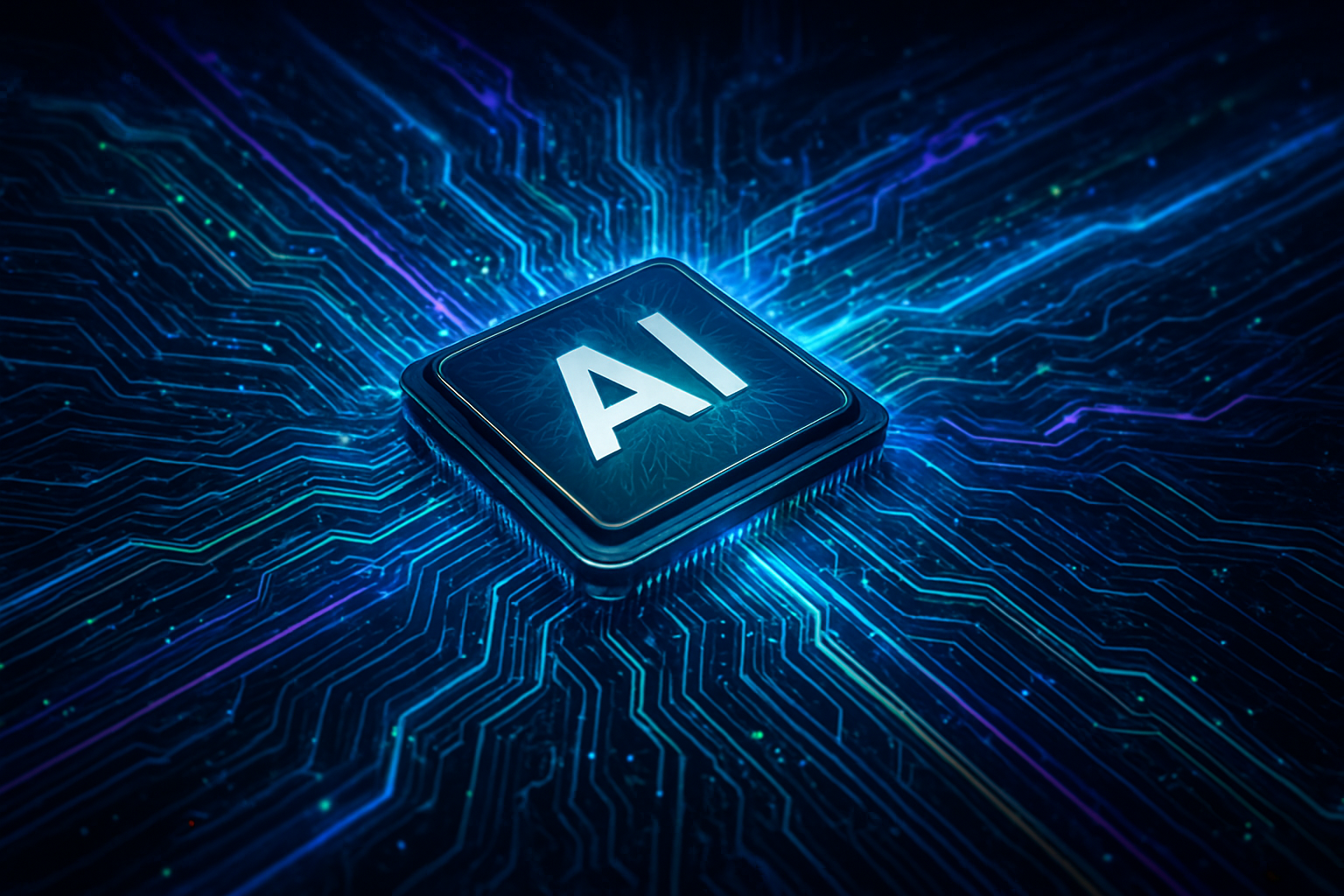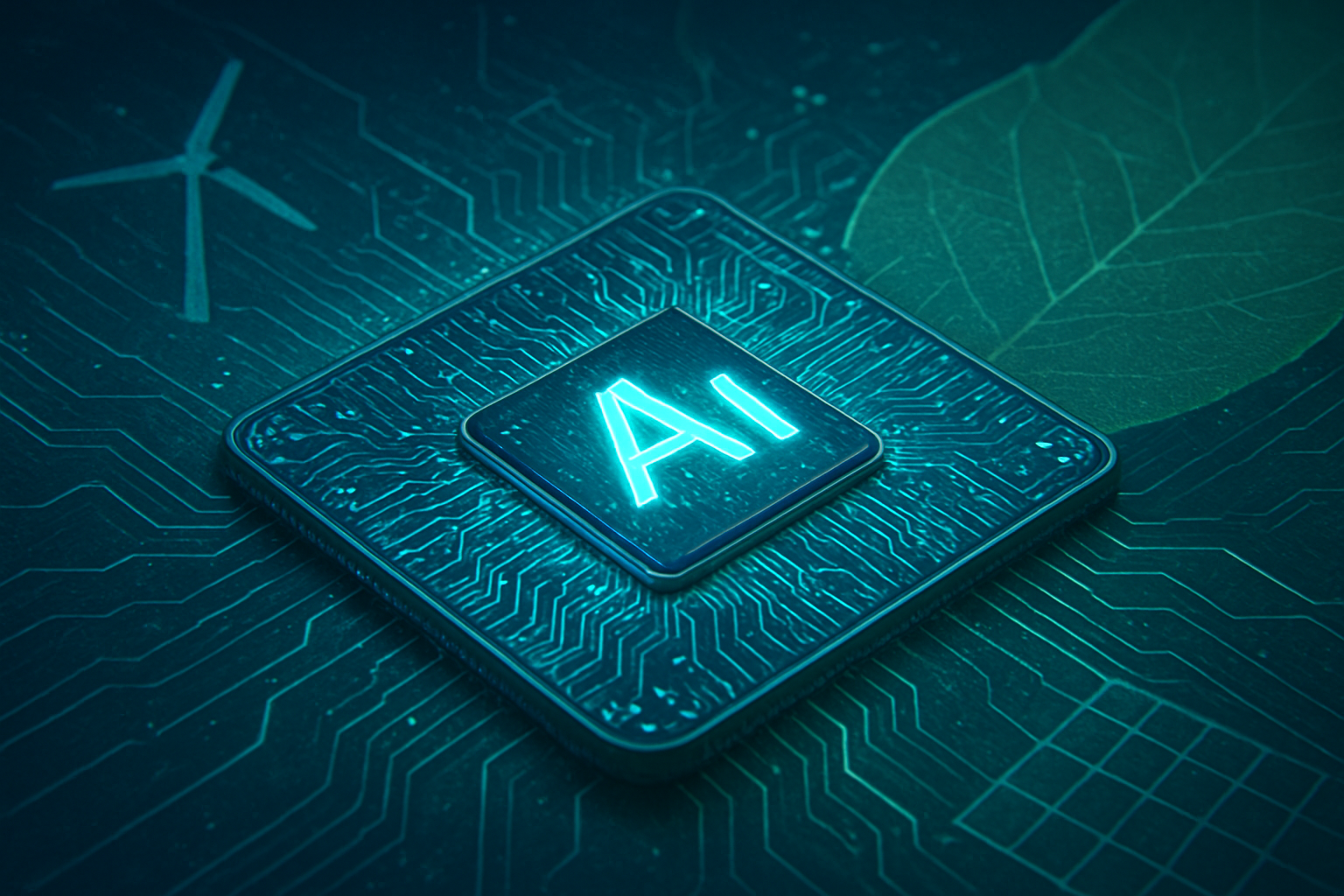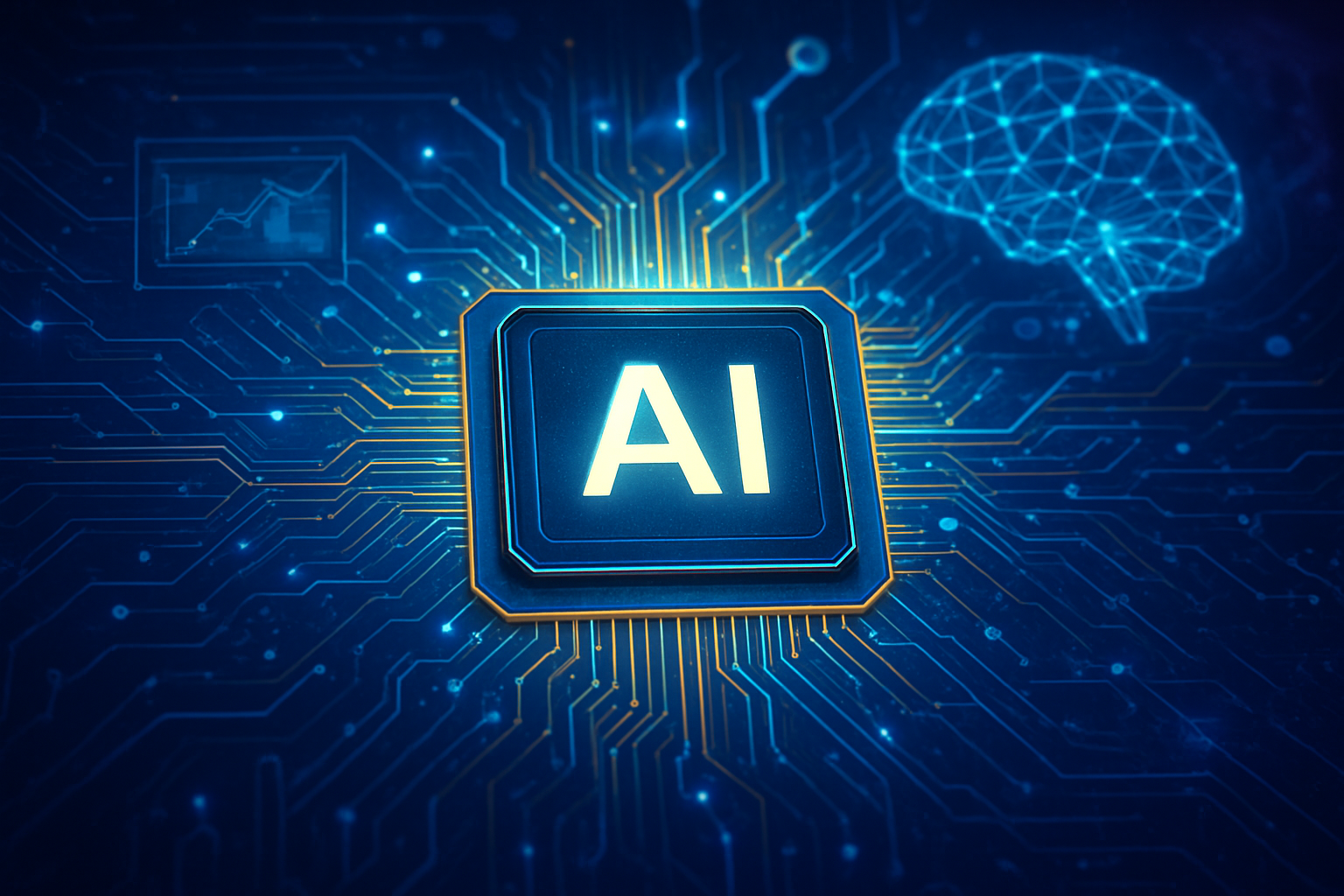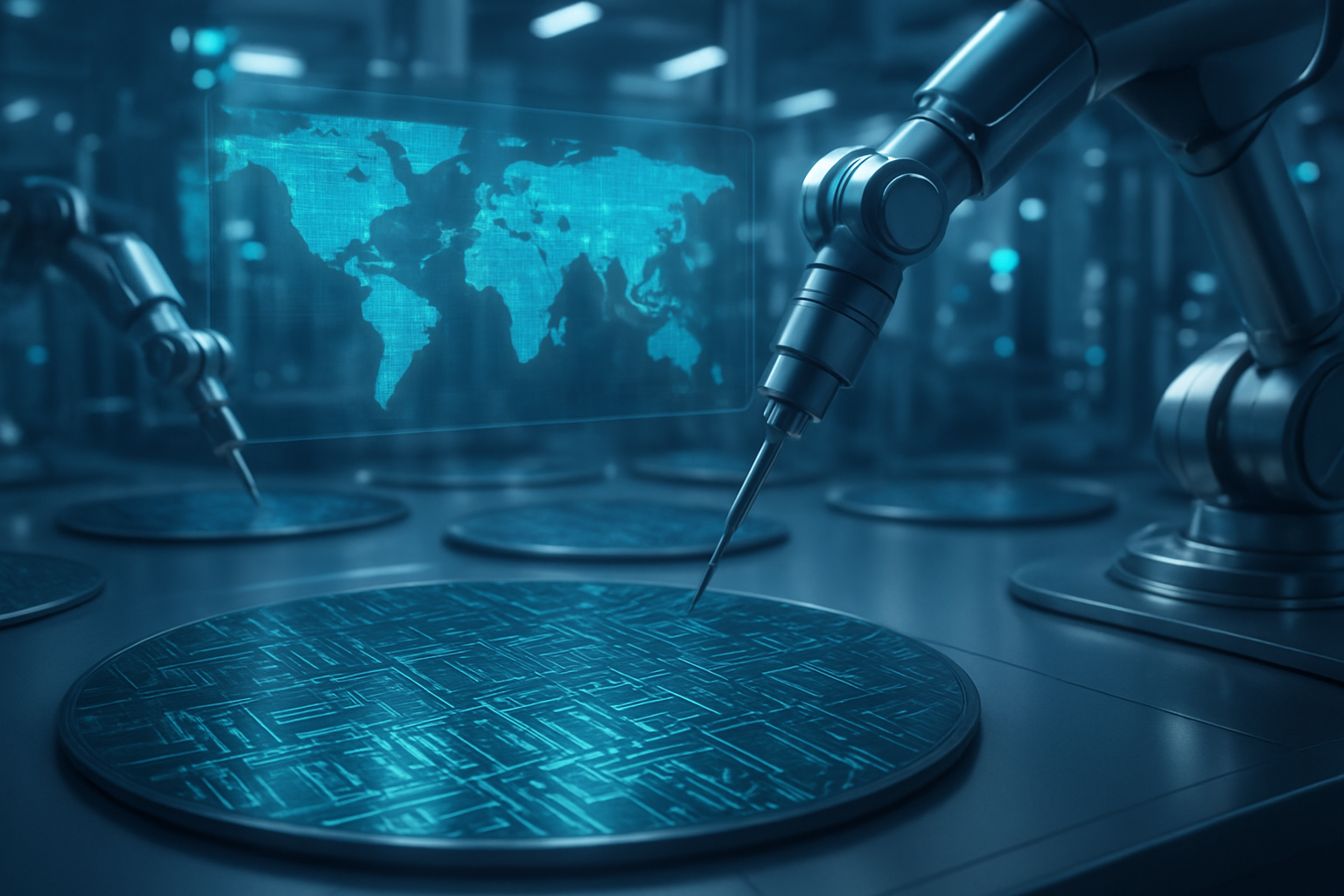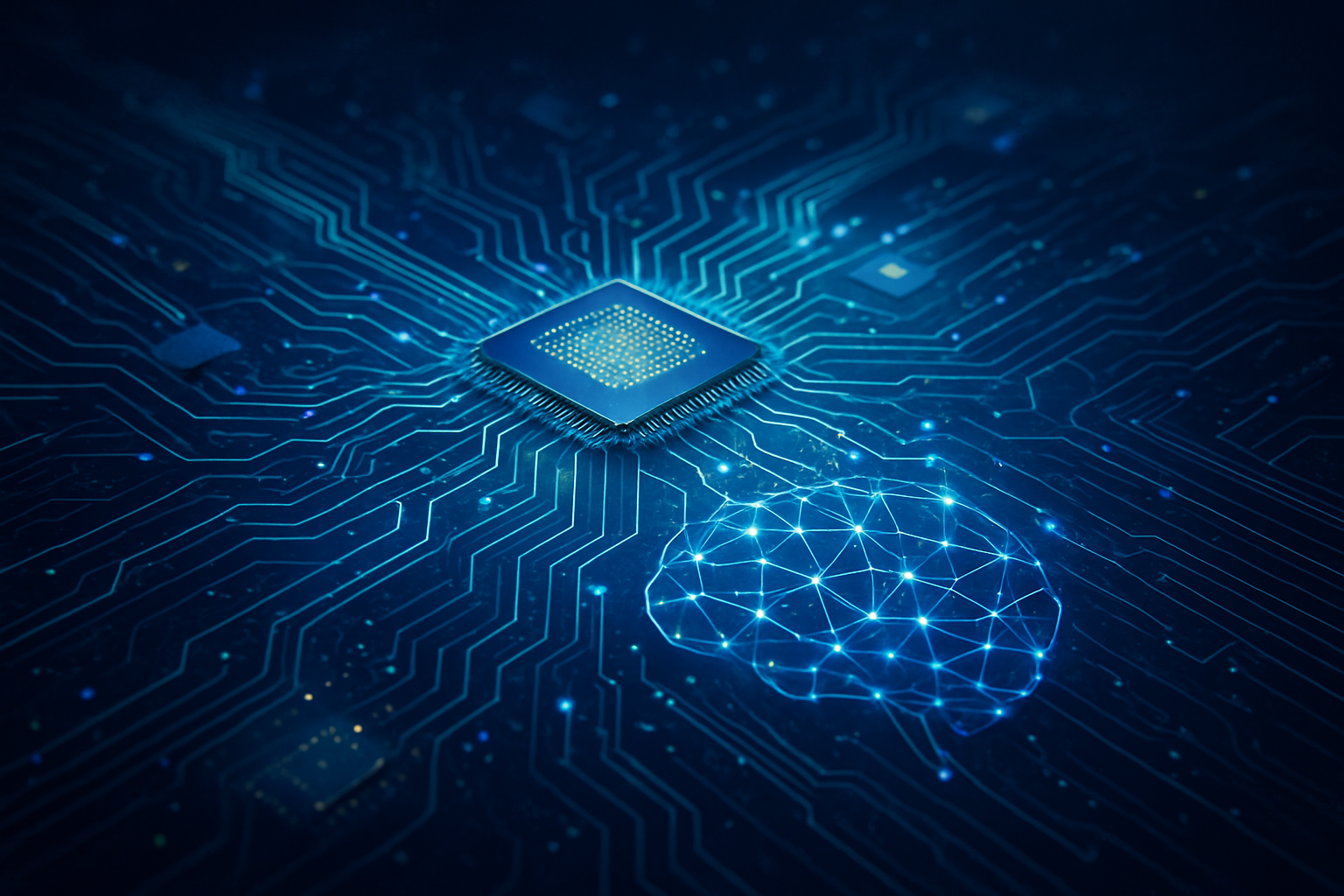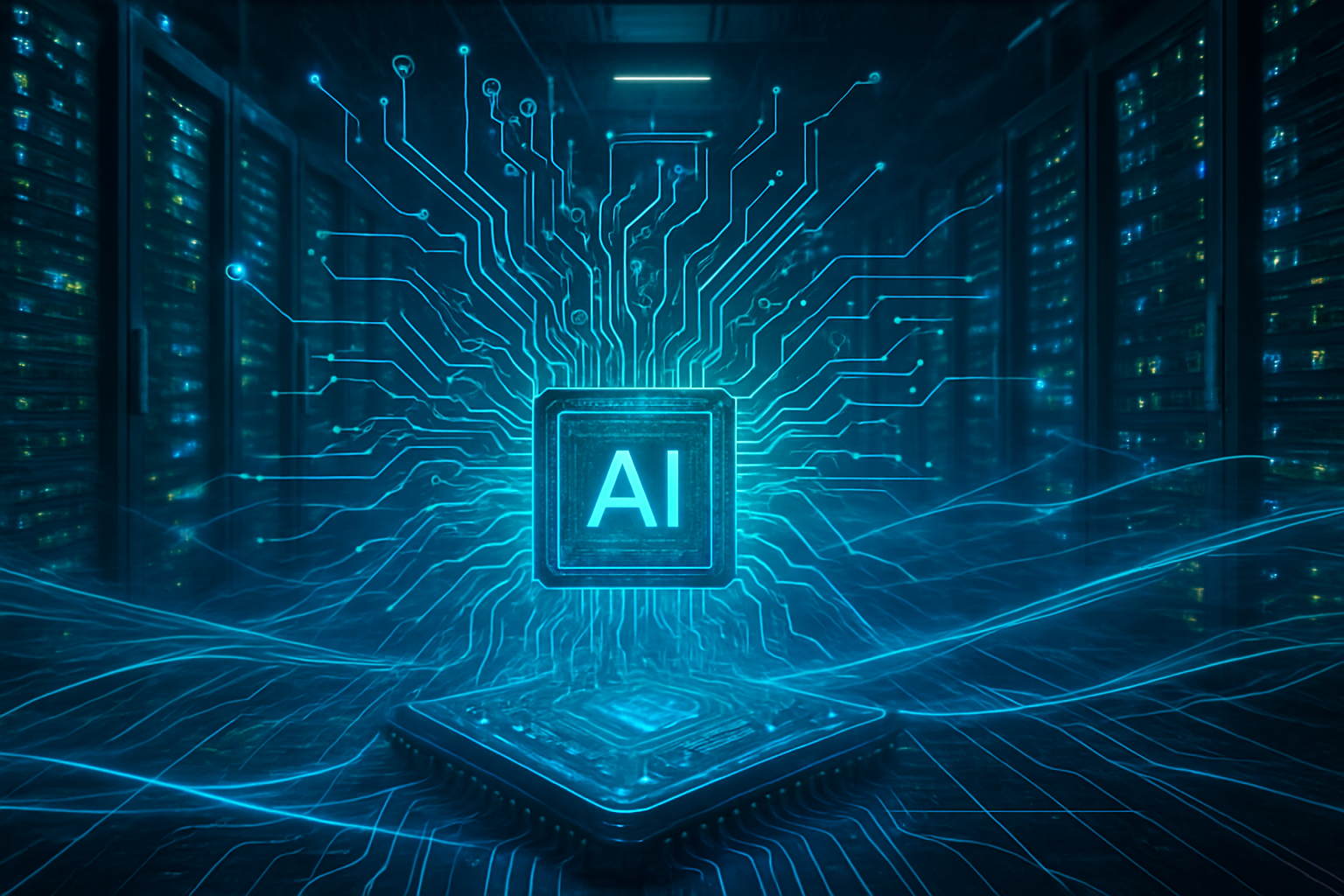The year 2025 marks a pivotal moment in the technology landscape, as the insatiable demand for Artificial Intelligence (AI) chips ignites an unprecedented "AI Supercycle" within the semiconductor industry. This isn't merely a period of incremental growth but a fundamental transformation, driving innovation, investment, and strategic realignments across the global tech sector. With the global AI chip market projected to exceed $150 billion in 2025 and potentially reaching $459 billion by 2032, the foundational hardware enabling the AI revolution has become the most critical battleground for technological supremacy.
This escalating demand, primarily fueled by the exponential growth of generative AI, large language models (LLMs), and high-performance computing (HPC) in data centers, is pushing the boundaries of chip design and manufacturing. Companies across the spectrum—from established tech giants to agile startups—are scrambling to secure access to the most advanced silicon, recognizing that hardware innovation is now paramount to their AI ambitions. This has immediate and profound implications for the entire semiconductor ecosystem, from leading foundries like TSMC to specialized players like Tower Semiconductor, as they navigate the complexities of unprecedented growth and strategic shifts.
The Technical Crucible: Architecting the AI Future
The advanced AI chips driving this supercycle are a testament to specialized engineering, representing a significant departure from previous generations of general-purpose processors. Unlike traditional CPUs designed for sequential task execution, modern AI accelerators are built for massive parallel computation, performing millions of operations simultaneously—a necessity for training and inference in complex AI models.
Key technical advancements include highly specialized architectures such as Graphics Processing Units (GPUs) with dedicated hardware like Tensor Cores and Transformer Engines (e.g., NVIDIA's Blackwell architecture), Tensor Processing Units (TPUs) optimized for tensor operations (e.g., Google's Ironwood TPU), and Application-Specific Integrated Circuits (ASICs) custom-built for particular AI workloads, offering superior efficiency. Neural Processing Units (NPUs) are also crucial for enabling AI at the edge, combining parallelism with low power consumption. These architectures allow cutting-edge AI chips to be orders of magnitude faster and more energy-efficient for AI algorithms compared to general-purpose CPUs.
Manufacturing these marvels involves cutting-edge process nodes like 3nm and 2nm, enabling billions of transistors to be packed into a single chip, leading to increased speed and energy efficiency. Taiwan Semiconductor Manufacturing Company (TSMC) (NYSE: TSM), the undisputed leader in advanced foundry technology, is at the forefront, actively expanding its 3nm production, with NVIDIA (NASDAQ: NVDA) alone requesting a 50% increase in 3nm wafer production for its Blackwell and Rubin AI GPUs. All three major wafer makers (TSMC, Samsung, and Intel (NASDAQ: INTC)) are expected to enter 2nm mass production in 2025. Complementing these smaller transistors is High-Bandwidth Memory (HBM), which provides significantly higher memory bandwidth than traditional DRAM, crucial for feeding vast datasets to AI models. Advanced packaging techniques like TSMC's CoWoS (Chip-on-Wafer-on-Substrate) and SoIC (System-on-Integrated-Chips) are also vital, arranging multiple chiplets and HBM stacks on an intermediary chip to facilitate high-bandwidth communication and overcome data transfer bottlenecks.
Initial reactions from the AI research community and industry experts are overwhelmingly optimistic, viewing AI as the "backbone of innovation" for the semiconductor sector. However, this optimism is tempered by concerns about market volatility and a persistent supply-demand imbalance, particularly for high-end components and HBM, predicted to continue well into 2025.
Corporate Chessboard: Shifting Power Dynamics
The escalating demand for AI chips is profoundly reshaping the competitive landscape, creating immense opportunities for some while posing strategic challenges for others. This silicon gold rush has made securing production capacity and controlling the supply chain as critical as technical innovation itself.
NVIDIA (NASDAQ: NVDA) remains the dominant force, having achieved a historic $5 trillion valuation in November 2025, largely due to its leading position in AI accelerators. Its H100 Tensor Core GPU and next-generation Blackwell architecture continue to be in "very strong demand," cementing its role as a primary beneficiary. However, its market dominance (estimated 70-90% share) is being increasingly challenged.
Other Tech Giants like Google (NASDAQ: GOOGL), Amazon (NASDAQ: AMZN), Microsoft (NASDAQ: MSFT), and Meta Platforms (NASDAQ: META) are making massive investments in proprietary silicon to reduce their reliance on NVIDIA and optimize for their expansive cloud ecosystems. These hyperscalers are collectively projected to spend over $400 billion on AI infrastructure in 2026. Google, for instance, unveiled its seventh-generation Tensor Processing Unit (TPU), Ironwood, in November 2025, promising more than four times the performance of its predecessor for large-scale AI inference. This strategic shift highlights a move towards vertical integration, aiming for greater control over costs, performance, and customization.
Startups face both opportunities and hurdles. While the high cost of advanced AI infrastructure can be a barrier, the rise of "AI factories" offering GPU-as-a-service allows them to access necessary compute without massive upfront investments. Startups focused on AI optimization and specialized workloads are attracting increased investor interest, though some face challenges with unclear monetization pathways despite significant operating costs.
Foundries and Specialized Manufacturers are experiencing unprecedented growth. TSMC (NYSE: TSM) is indispensable, producing approximately 90% of the world's most advanced semiconductors. Its advanced wafer capacity is in extremely high demand, with over 28% of its total capacity allocated to AI chips in 2025. TSMC has reportedly implemented price increases of 5-10% for its 3nm/5nm processes and 15-20% for CoWoS advanced packaging in 2025, reflecting its critical position. The company is reportedly planning up to 12 new advanced wafer and packaging plants in Taiwan next year to meet overwhelming demand.
Tower Semiconductor (NASDAQ: TSEM) is another significant beneficiary, with its valuation surging to an estimated $10 billion around November 2025. The company specializes in cutting-edge Silicon Photonics (SiPho) and Silicon Germanium (SiGe) technologies, which are crucial for high-speed data centers and AI applications. Tower's SiPho revenue tripled in 2024 to over $100 million and is expected to double again in 2025, reaching an annualized run rate exceeding $320 million by Q4 2025. The company is investing an additional $300 million to boost capacity and advance its SiGe and SiPho capabilities, giving it a competitive advantage in enabling the AI supercycle, particularly in the transition towards co-packaged optics (CPO).
Other beneficiaries include AMD (NASDAQ: AMD), gaining significant traction with its MI300 series, and memory makers like SK Hynix (KRX: 000660), Samsung Electronics (KRX: 005930), and Micron Technology (NASDAQ: MU), which are rapidly scaling up High-Bandwidth Memory (HBM) production, essential for AI accelerators.
Wider Significance: The AI Supercycle's Broad Impact
The AI chip demand trend of 2025 is more than a market phenomenon; it is a profound transformation reshaping the broader AI landscape, triggering unprecedented innovation while simultaneously raising critical concerns.
This "AI Supercycle" is driving aggressive advancements in hardware design. The industry is moving towards highly specialized silicon, such as NPUs, TPUs, and custom ASICs, which offer superior efficiency for specific AI workloads. This has spurred a race for advanced manufacturing and packaging techniques, with 2nm and 1.6nm process nodes becoming more prevalent and 3D stacking technologies like TSMC's CoWoS becoming indispensable for integrating multiple chiplets and HBM. Intriguingly, AI itself is becoming an indispensable tool in designing and manufacturing these advanced chips, accelerating development cycles and improving efficiency. The rise of edge AI, enabling processing on devices, also promises new applications and addresses privacy concerns.
However, this rapid growth comes with significant challenges. Supply chain bottlenecks remain a critical concern. The semiconductor supply chain is highly concentrated, with a heavy reliance on a few key manufacturers and specialized equipment providers in geopolitically sensitive regions. The US-China tech rivalry, marked by export restrictions on advanced AI chips, is accelerating a global race for technological self-sufficiency, leading to massive investments in domestic chip manufacturing but also creating vulnerabilities.
A major concern is energy consumption. AI's immense computational power requirements are leading to a significant increase in data center electricity usage. High-performance AI chips consume between 700 and 1,200 watts per chip. U.S. data centers are projected to consume between 6.7% and 12% of total electricity by 2028, with AI being a primary driver. This necessitates urgent innovation in power-efficient chip design, advanced cooling systems, and the integration of renewable energy sources. The environmental footprint extends to colossal amounts of ultra-pure water needed for production and a growing problem of specialized electronic waste due to the rapid obsolescence of AI-specific hardware.
Compared to past tech shifts, this AI supercycle is distinct. While some voice concerns about an "AI bubble," many analysts argue it's driven by fundamental technological requirements and tangible infrastructure investments by profitable tech giants, suggesting a longer growth runway than, for example, the dot-com bubble. The pace of generative AI adoption has far outpaced previous technologies, fueling urgent demand. Crucially, hardware has re-emerged as a critical differentiator for AI capabilities, signifying a shift where AI actively co-creates its foundational infrastructure. Furthermore, the AI chip industry is at the nexus of intense geopolitical rivalry, elevating semiconductors from mere commercial goods to strategic national assets, a level of government intervention more pronounced than in earlier tech revolutions.
The Horizon: What's Next for AI Chips
The trajectory of AI chip technology promises continued rapid evolution, with both near-term innovations and long-term breakthroughs on the horizon.
In the near term (2025-2030), we can expect further proliferation of specialized architectures beyond general-purpose GPUs, with ASICs, TPUs, and NPUs becoming even more tailored to specific AI workloads for enhanced efficiency and cost control. The relentless pursuit of miniaturization will continue, with 2nm and 1.6nm process nodes becoming more widely available, enabled by advanced Extreme Ultraviolet (EUV) lithography. Advanced packaging solutions like chiplets and 3D stacking will become even more prevalent, integrating diverse processing units and High-Bandwidth Memory (HBM) within a single package to overcome memory bottlenecks. Intriguingly, AI itself will become increasingly instrumental in chip design and manufacturing, automating complex tasks and optimizing production processes. There will also be a significant shift in focus from primarily optimizing chips for AI model training to enhancing their capabilities for AI inference, particularly at the edge.
Looking further ahead (beyond 2030), research into neuromorphic and brain-inspired computing is expected to yield chips that mimic the brain's neural structure, offering ultra-low power consumption for pattern recognition. Exploration of novel materials and architectures beyond traditional silicon, such as spintronic devices, promises significant power reduction and faster switching speeds. While still nascent, quantum computing integration could also offer revolutionary capabilities for certain AI tasks.
These advancements will unlock a vast array of applications, from powering increasingly complex LLMs and generative AI in cloud data centers to enabling robust AI capabilities directly on edge devices like smartphones (over 400 million GenAI smartphones expected in 2025), autonomous vehicles, and IoT devices. Industry-specific applications will proliferate in healthcare, finance, telecommunications, and energy.
However, significant challenges persist. The extreme complexity and cost of manufacturing at atomic levels, reliant on highly specialized EUV machines, remain formidable. The ever-growing power consumption and heat dissipation of AI workloads demand urgent innovation in energy-efficient chip design and cooling. Memory bottlenecks and the inherent supply chain and geopolitical risks associated with concentrated manufacturing are ongoing concerns. Furthermore, the environmental footprint, including colossal water usage and specialized electronic waste, necessitates sustainable solutions. Experts predict a continued market boom, with the global AI chip market reaching approximately $453 billion by 2030. Strategic investments by governments and tech giants will continue, solidifying hardware as a critical differentiator and driving the ascendancy of edge AI and diversification beyond GPUs, with an imperative focus on energy efficiency.
The Dawn of a New Silicon Era
The escalating demand for AI chips marks a watershed moment in technological history, fundamentally reshaping the semiconductor industry and the broader AI landscape. The "AI Supercycle" is not merely a transient boom but a sustained period of intense innovation, strategic investment, and profound transformation.
Key takeaways include the critical shift towards specialized AI architectures, the indispensable role of advanced manufacturing nodes and packaging technologies spearheaded by foundries like TSMC, and the emergence of specialized players like Tower Semiconductor as vital enablers of high-speed AI infrastructure. The competitive arena is witnessing a vigorous dance between dominant players like NVIDIA and hyperscalers developing their own custom silicon, all vying for supremacy in the foundational layer of AI.
The wider significance of this trend extends to driving unprecedented innovation, accelerating the pace of technological adoption, and re-establishing hardware as a primary differentiator. Yet, it also brings forth urgent concerns regarding supply chain resilience, massive energy and water consumption, and the complexities of geopolitical rivalry.
In the coming weeks and months, the world will be watching for continued advancements in 2nm and 1.6nm process technologies, further innovations in advanced packaging, and the ongoing strategic maneuvers of tech giants and semiconductor manufacturers. The imperative for energy efficiency will drive new designs and cooling solutions, while geopolitical dynamics will continue to influence supply chain diversification. This era of silicon will define the capabilities and trajectory of artificial intelligence for decades to come, making the hardware beneath the AI revolution as compelling a story as the AI itself.
This content is intended for informational purposes only and represents analysis of current AI developments.
TokenRing AI delivers enterprise-grade solutions for multi-agent AI workflow orchestration, AI-powered development tools, and seamless remote collaboration platforms.
For more information, visit https://www.tokenring.ai/.
